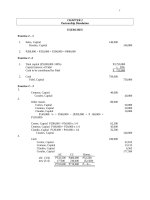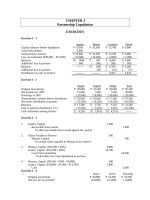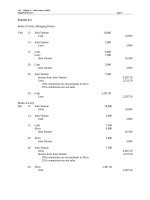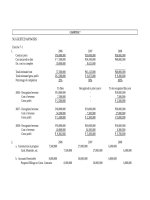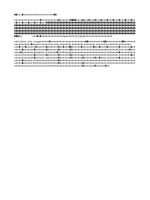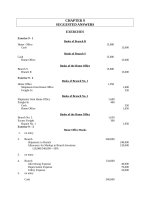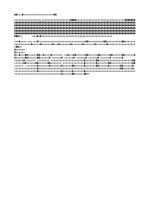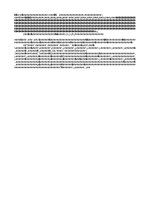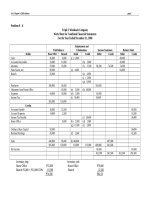Solution manual managerial accounting by cabrera 2010 chapter 19 answer
Bạn đang xem bản rút gọn của tài liệu. Xem và tải ngay bản đầy đủ của tài liệu tại đây (414.76 KB, 644 trang )
��#ࡱ#�################>###��
#####################################����########################���������������
��������������������������������������������������������������������������������
��������������������������������������������������������������������������������
��������������������������������������������������������������������������������
��������������������������������������������������������������������������������
��������������������������������������������������������������������������������
���#5@
###�#�###############X ####bjbj�2�2##################
###0###�X##�X##9L######�#######################��##########��##########��#######
###########�#####�#######�###�#######�#######�#######�#######�###############�##
#####�:######�:######�:##8###�:##�###�;##�###�#######��##.###�A######�A##:####B#
######B#######B#######B#######B#######B######$y######&y######&y######&y##5###[y#
#D###��##D###�##$####̋
##R####�##�####�##Q###################�#######�B############
###########B#######B######�B######�B#######�##############�#######�########B####
###########B######X�######�G######�G######�G######�B######�########B######�#####
###B######$y##############�G####################################################
##�B######$y######�G##f###�G######
H##�###�W##D###�#######�########################################################
########Z#######B######�A##
####��{���#########�:######�B######8Y##&###########X[##�###n�##0###��######^Y##�
###��######�B##�###��##L####Z##############�#######�#######�#######�#######�####
###�#######################��##############�########Z##D####B######,B######�G###
###:B##
###FB##p####################################B#######B#######B#######�#######�###
###�#######�###ğ##~�##D�##########�G######�#######�#######~�####################
################################################################################
################################################################################
################################################################################
################################################################################
################################################################################
################################################################################
################################################################################
################################################################################
################################################################################
########################################################################CHAPTER
19RELEVANT COSTS FOR DECISION MAKINGI.
Questions1. Quantitative factors are
those which may more easily be reduced in terms of pesos such as projected costs
of materials, labor and overhead. Qualitative factors are those whose
measurement in pesos is difficult and imprecise; yet a qualitative factor may be
easily given more weight than the measurable cost savings. It can be seen that
the accountant�s role in making decisions deals with the quantitative factors.2.
Relevant costs are expected future costs that will differ between
alternatives. In view of the definition of relevant costs, historical costs are
always irrelevant because they are not future costs. They may be helpful in
predicting relevant costs but they are always irrelevant costs per se.3.
The
differential costs in any given situation is commonly defined as the change in
total cost under each alternative. It is not relevant cost, but it is the
algebraic difference between the relevant costs for the alternatives under
consideration.4. Analysis:Future costs:#Replace #Rebuild## New Truck#P10,200###
Less: Proceeds from ####
disposal, net #
1,000####P
9,200#P8,500##Advantage of rebuilding#P700##
The original cost of the old
truck is irrelevant but its disposal value is relevant. It is recommended that
the truck should be rebuilt because it will involve lesser cash outlay.II.
ExercisesExercise 1 (Identifying Relevant Costs)
#Case 1#Case
2##Item#Relevant#Not Relevant#Relevant#Not Relevant##a.
Sales revenue
#X###X##b. Direct materials #X##X###c. Direct labor
#X###X##d.
Variable manufacturing overhead
#X###X##e. Book value � Model E7000
machine
##X##X##f. Disposal value � Model E7000 machine
##X#X###g.
Depreciation � Model E7000 machine ##X##X##h. Market value � Model F5000
machine (cost)
#X##X###i. Fixed manufacturing
overhead
##X##X##j.
Variable selling expense
#X###X##k. Fixed selling expense
#X###X##l. General administrative overhead
#X###X##Exercise 2
(Identification of Relevant Costs)
Requirement 1Fixed cost per mile (P3,500* �
10,000 miles)
#P0.35##Variable operating cost per mile #� 0.08##Average cost
per mile
#P0.43###*#Depreciation #P2,000####Insurance
#960####Garage rent
#480####Automobile tax and license #� �����60####Total
#P3,500##
Requirement 2
The variable operating costs would be relevant in this
situation. The depreciation would not be relevant since it relates to a sunk
cost. However, any decrease in the resale value of the car due to its use would
be relevant. The automobile tax and license costs would be incurred whether
Ingrid decides to drive her own car or rent a car for the trip during summer
break and are therefore irrelevant. It is unlikely that her insurance costs
would increase as a result of the trip, so they are irrelevant as well. The
garage rent is relevant only if she could avoid paying part of it if she drives
her own car.
Requirement 3When figuring the incremental cost of the
more expensive car, the relevant costs would be the purchase price of the new
car (net of the resale value of the old car)
and the increases in the fixed
costs of insurance and automobile tax and license. The original purchase price
of the old car is a sunk cost and is therefore irrelevant. The variable
operating costs would be the same and therefore are irrelevant. (Students are
inclined to think that variable costs are always relevant and fixed costs are
always irrelevant in decisions. This requirement helps to dispel that notion.)
Exercise 3 (Make or Buy a Component)
Requirement 1#Per Unit
#D#i#f#f#e#r#e#n#t#i#a#l# #C#o#s#t#s###1#5#,#0#0#0#
#u#n#i#t#s#######M#a#k#e###B#u#y###M#a#k#e###B#u#y#####C#o#s#t# #o#f#
#p#u#r#c#h#a#s#i#n#g#
#####P#2#0#0#####P#3#,#0#0#0#,#0#0#0#####D#i#r#e#c#t#
#m#a#t#e#r#i#a#l#s#
###P## 6#0#####P## 9#0#0#,#0#0#0#######D#i#r#e#c#t#
#l#a#b#o#r# ###8#0#####1#,#2#0#0#,#0#0#0#######V#a#r#i#a#b#l#e#
#m#a#n#u#f#a#c#t#u#r#i#n#g# #o#v#e#r#h#e#a#d#
###1#0#####1#5#0#,#0#0#0#######F#i#x#e#d# #m#a#n#u#f#a#c#t#u#r#i#n#g#
#o#v#e#r#h#e#a#d#,# #t#r#a#c#e#a#b#l#e#1# ###2#0#####3#0#0#,#000###Fixed
manufacturing overhead, common
#�
��0#�
��0# �������
����0#
�����������0##Total costs
#P170#P200#P2,550,000#P3,000,000########Difference
in favor of continuing to make the parts #P30#P450,000##1#Only the supervisory
salaries can be avoided if the parts are purchased. The remaining book value of
the special equipment is a sunk cost; hence, the P3 per unit depreciation
expense is not relevant to this decision. Based on these data, the company
should reject the offer and should continue to produce the parts internally.##
Requirement 2##Make#Buy###Cost of purchasing (part 1)
##P3,000,000###Cost of making (part 1)
#P2,550,000####Opportunity
cost�segment margin forgone on a potential new product line
# ���650,000#
�����������###Total cost
#P3,200,000#P3,000,000########Difference in favor
of purchasing from the outside supplier #P200,000##
Thus, the company
should accept the offer and purchase the parts from the outside supplier.
Exercise 4 (Evaluating Special Order)
Only the incremental costs and benefits are
relevant. In particular, only the variable manufacturing overhead and the cost
of the special tool are relevant overhead costs in this situation. The other
manufacturing overhead costs are fixed and are not affected by the decision.
##Per#Total####Unit#10 bracelets###Incremental revenue
#P3,499.50#P34,995.00###Incremental costs:#####Variable costs:#####Direct
materials
# 1,430.00 # 14,300.00 ###Direct labor
# 860.00 # 8,600.00
###Variable manufacturing overhead # 70.00 # 700.00 ###Special filigree
#
60.00 #
600.00 ###Total variable cost
#P2,420.00 # 24,200.00 ###Fixed
costs:#####Purchase of special tool ##
4,650.00 ###Total incremental cost ##
28.850.00 ###Incremental net operating income ##P 6.145.00 ##Even though the
price for the special order is below the company�s regular price for such an
item, the special order would add to the company�s net operating income and
should be accepted. This conclusion would not necessarily follow if the special
order affected the regular selling price of bracelets or if it required the use
of a constrained resource.Exercise 5 (Utilization of a Constrained Resource)
Requirement 1###X#Y#Z###(1)
#Contribution margin per unit
#P18#P36#P20###(2)
#Direct labor cost per unit #P12#P32#P16###(3)
#Direct
labor rate per hour
#8#8#8###(4)
#Direct labor-hours required per unit (2)
�
(3)
#1.5#4.0#2.0####Contribution margin per direct labor-hour (1)
� (4)
#P12#P##########################################################################
##### 9###P#1#0######R#e#q#u#i#r#e#m#e#n#t# #2###
#
#T#h#e#
#c#o#m#p#a#n#y# #s#h#o#u#l#d# #c#o#n#c#e#n#t#r#a#t#e# #i#t#s# #l#a#b#o#r#
#t#i#m#e# #o#n# #p#r#o#d#u#c#i#n#g# #p#r#o#d#u#c#t# #X#:##
###X###Y###Z#####C#o#n#t#r#i#b#u#t#i#o#n# #m#a#r#g#i#n# #p#e#r# #d#i#r#e#c#t#
#l#a#b#o#r#-#h#o#u#r#
###P#1#2###P#9###P#1#0#####D#i#r#e#c#t# #l#a#b#o#r##h#o#u#r#s# #a#v#a#i#l#a#b#l#e#
###�#�#3#,#0#0#0###�#�#3#,#0#0#0###�#�#3#,#0#0#0#####T#o#t#a#l#
#c#o#n#t#r#i#b#u#t#i#o#n# #m#a#r#g#i#n#
###P#3#6#,#0#0#0###P#2#7#,#0#0#0#P30,000##
Although product X
has the lowest contribution margin per unit and the second lowest contribution
margin ratio, it has the highest contribution margin per direct labor-hour.
Since labor time seems to be the company�s constraint, this measure should guide
management in its production decisions.Requirement 3
The amount Jaycee
Company should be willing to pay in overtime wages for additional direct labor
time depends on how the time would be used. If there are unfilled orders for
all of the products, Jaycee would presumably use the additional time to make
more of product X. Each hour of direct labor time generates P12 of contribution
margin over and above the usual direct labor cost. Therefore, Jaycee should be
willing to pay up to P20 per hour (the P8 usual wage plus the contribution
margin per hour of P12)
for additional labor time, but would of course prefer to
pay far less. The upper limit of P20 per direct labor hour signals to managers
how valuable additional labor hours are to the company.
If all the
demand for product X has been satisfied, Jaycee Company would then use any
additional direct labor-hours to manufacture product Z. In that case, the
company should be willing to pay up to P18 per hour (the P8 usual wage plus the
P10 contribution margin per hour for product Z)
to manufacture more product Z.
Likewise, if all the demand for both products X and Z has been
satisfied, additional labor hours would be used to make product Y. In that
case, the company should be willing to pay up to P17 per hour to manufacture
more product Y.Exercise 6 (Sell or Process Further)
#Product A#Product B#Product
C##Sales value after further processing #P80,000�#P150,000#P75,000##Sales
value at split-off point
# �50,000�#���90,000#�60,000##Incremental
revenue
#30,000�#60,000#15,000##Cost of further processing
#�
35,000�#���40,000#�12,000##Incremental profit (loss)
#P(5,000)
#���20,000#���3,000##
Products B and C should be processed
further, but not Product A.III.
ProblemsProblem 1 (Accept or Reject an
Order)
#Product A#Product B##Selling price per unit#P1.20#P1.40##Less Variable
costs/unit:####
Materials#0.50#0.70##
Labor#0.20#0.24## Factory overhead
(25%)
# 0.10# 0.14### 0.80# 1.08##
Contribution margin/unit#P0.40#P0.32##
Multiplied by number of units to be sold#21,000 units#30,000 units##
Total contribution margin#P8,400 #P9,600##
Product B should be
accepted because its total contribution margin is higher than that of Product A.
Problem 2 (Eliminate or Retain a Product Line)
Requirement 1No, production and
sale of the round trampolines should not be discontinued. Computations to
support this answer follow:Contribution margin lost if the round trampolines
are discontinued
P(80,000)
Less fixed costs that can be
avoided:
Advertising � traceable
P41,000
Line supervisors� salaries
6,000
47,000Decrease in net operating income for the
company as a whole
P(33,000)
The depreciation of
the special equipment represents a sunk cost, and therefore it is not relevant
to the decision. The general factory overhead is allocated and will presumably
continue regardless of whether or not the round trampolines are discontinued;
thus, it is not relevant.
Requirement 2
If management wants a clear
picture of the profitability of the segments, the general factory overhead
should not be allocated. It is a common cost and therefore should be deducted
from the total product-line segment margin. A more useful income statement
format would be as follows:
##Trampoline###Total#Round#Rectangular#Octagonal##Sales
#P1,000,000#P140,000#P500,000#P360,000##Less variable expenses
#
410,000#
60,000# 200,000# 150,000##Contribution margin
#
590,000#
80,000# 300,000# 210,000##Less fixed expenses:######Advertising � traceable
#216,000#41,000#110,000#65,000##Depreciation of special equipment
#
95,000#20,000#40,000#35,000##Line supervisors� salaries
#
19,000#
6,000#
7,000#
6,000##Total traceable fixed expenses
#
330,000#
67,000#
157,000# 106,000##Product-line segment margin
#260,000#P
13,000#
P143,000#P104,000##Less common fixed expenses #
200,000#####Net operating
income (loss)
#P
60,000#####Problem 3 (Product Mix)
Requirement 1#Product
Line ###A#B#C#D##Selling price per unit#P30#P25#P10#P8##Variable cost per unit#
25# 10#
5# 4##Contribution margin / unit#P5 #P15#P 5#P4##Divided by no.
of hours required for each unit#5 hrs.#10 hrs.#4 hrs.#1 hr.##Contribution per
hour#P1#P1.5#P1.25#P4## Product ranking:
1.
D
2.
B
3.
C
4.
ABased on the above analysis, first priority
should be given to Product D. The company should use 4,000 out of the available
96,000 hrs. to produce 4,000 units of product D. The remaining 92,000 hrs.
should be used to produce 9,200 units of Product B. Hence, the best product
combination is 4,000 units of Product D and 9,200 units of Product B.
Requirement 2If there were no market limitations on any of the products,
the company should use all the available 96,000 hours in producing 96,000 units
of product D only.
The difference in profit between the two alternatives is
computed as follows:
Contribution margin of combination (1)
Product D (4,000 x P 4.00)
P 16,000
Product B (9,200 x P15.00)
138,000
Total contribution margin of D and B
P154,000
Less
contribution margin of D only
(96,000 x P4)
384,000
Difference, excess over profit in combination (1)
P230,000Problem 4
(Accept or Reject a Special Order)
Requirement 1The company should accept the
special order of 4,000 @ P10 each because this selling price is still higher
than the additional variable cost to be incurred. Whether or not variable
marketing expenses will be incurred, the decision is still to accept the order.
Supporting computations:
(a)
Assume no additional variable
marketing cost will be incurred.
Selling price per unit
P10.00
Less variable manufacturing costs:
Direct materials
P5.00
Direct labor
3.00
Variable overhead
0.75
8.75
Contribution margin/unit
P 1.25
Multiplied by number of units of order
4,000
units
Total increase in profit
P5,000
(b)
Assume additional
variable marketing cost will be incurred.
Selling price per unit
P10.00
Less variable costs (P8.75 + P0.25)
9.00
Contribution margin / unit
P 1.00
Multiplied by
number of units of order
4,000
units
Total increase in
contribution margin
P4,000
Requirement 2
P8.75, the total
variable manufacturing cost. Requirement 3
Direct materials P5.00 Direct
labor
3.00 Variable factory overhead
0.75
Total cost of
inventory under direct costing
P8.75 Requirement 4
Present contribution
margin
[10,000 units x (P15 - P9)
] P60,000
Less proposed
contribution margin
[(P14 - P9)
x 11,000 units]
55,000
Decrease
in contribution margin P 5,000
The company should not reduce the
selling price from P15 to P14 even if volume will go up because total
contribution margin will decrease.Problem 5 (CVP Analysis used for Decision
Making)
Requirement (a)
Units sold per month#No. of
months#Probability##4,000#6#20%##5,000#15#50%##6,000# 9# 30%###30#100%##
Requirement (b)
#Production###4,000 units#5,000 units#6,000 units##Sales
(4,000 x P40)
#P160,000#P160,000#P160,000##Less variable costs#####
Production cost @ P25#100,000#125,000#150,000## Purchase cost @ P45#
#
#
##
Total#P100,000#P125,000#P150,000##Contribution margin#P 60,000#P
35,000#P 10,000###########################Sales (5,000 x
P40)
#P200,000#P200,000#P200,000##Less variable costs##### Production cost @
P25#100,000#125,000#150,000## Purchase cost @ P45#
45,000#
#
##
Total#P145,000#P125,000#P150,000##Contribution
margin#P 55,000#P 75,000#P 50,000#######Sales (6,000 x
P40)
#P240,000#P240,000#P240,000##Less variable costs##### Production cost @
P25#100,000#125,000#150,000## Purchase cost @ P45#
90,000#
45,000#
0##
Total#P190,000#P170,000#P150,000##Contribution margin#P 50,000#P
70,000#P 90,000####### Requirement (c)
Sales Order#Contribution
Margin#Probability#Expected Value##4,000#P35,000#0.20#P
7,000##5,000#75,000#0.50#37,500##6,000#70,000#0.30# 21,000##
Average
Contribution Margin#P65,500## Problem 6 (Pricing)
Requirement A:#2005#
2006#Operating Result at Full Capacity##Sales#P 100,000#P 400,000#P
480,000##Less Variable cost# 130,000#
520,000#
624,000##Contribution
margin#(P 30,000)
#(P120,000)
#(P144,000)
##Less Fixed cost#
40,000#
40,000#
40,000##Net income (loss)
#(P 70,000)
#(P160,000)
#(P184,000)
##The company had been
operating at a loss because the product had been selling with a negative
contribution margin. Hence, the more units are sold, the higher the loss will
be.Requirement B:
P60.14Requirement C:
P74.29Requirement D:
P56.58Problem
7 (Make or Buy)
#Cost of Making#Cost of Buying##Outside purchase##P90,000##Direct
materials#P15,000###Direct labor#30,000###Variable manufacturing
overhead#10,000###Fixed manufacturing overhead*# 15,000#
##
Total
cost#P70,000#P90,000## *
1/3 x P45,000
= P15,000Therefore, the annual
advantage to make the parts is P20,000.IV.
Multiple Choice Questions
C#D#D#A##C#A#A#D##B#D#D#C##B#A#E#A##A#D#B#C##B#C#D###C#A#D###B#C#C###A#B#A###B#C
#A###Supporting computations for nos. 16 - 29:16.
Sales [(100,000 x 90%)
x
(P5.00 x 120%)
]
P540,000
Less: Variable costs (P300,000 x 90%)
270,000
Contribution margin
P270,000
Less: Fixed costs
150,000
Operating income P120,00017. Direct materials P 4 Direct labor
5
Overhead
2
Selling cost
3
Minimum selling price per
unit
cost
P1418.
Relevant cost to make (10,000 x P24)
P240,000
Purchase
P300,000
Less: Savings in manufacturing cost
P45,000
Avoidable fixed overhead
50,000
95,000
Net purchase
price
P205,000
Difference in favor of �buy� alternative
P 35,000
19.
Increase in sales (60,000 x P3)
P180,000
Less:
Increase in variable cost (60,000 x P2.50)
150,000 Net increase in
income
P 30,00020.#R#S#T##
Sales (10,000 x
P20)
#P200,000#P200,000#P200,000## Less: Variable costs#####
R (P12 x
10,000)
#120,000####
S (P 8 x 10,000)
##80,000### T (P 4 x 10,000)
#
#
#
40,000##
Contribution margin#P
80,000#P120,000#P160,000##
21.#R#S#T## Sales (P16 x
15,000)
#P240,000#P240,000#P240,000##
Less: Variable costs#####
R (P12 x
15,000)
#180,000####
S (P 8 x 15,000)
##120,000### T (P 4 x 15,000)
#
#
#
60,000##
Contribution margin#P
60,000#P120,000#P180,000##
Less: Fixed costs#
40,000#
80,000#
120,000##
Operating income#P 20,000#P 40,000#P 60,000##22. Old operating
income:
Contribution margin
P80,000
Less: Fixed
cost
40,000
P40,000
New operating income
20,000
Difference - decrease
P20,00023. Sales
P1,200,000 Less: Variable costs
Direct materials P300,000
Direct labor
400,000
Factory overhead 80,000
Marketing expenses
70,000
Administrative expenses
50,000
900,000 Contribution margin
P 300,000 Less: Fixed costs
Factory overhead P 50,000
Marketing expenses
30,000
Administrative expenses 20,000
Increase in fixed costs
10,000
110,000
Profit
P 190,000 24.
Sales
P1,200,000 Less: Variable costs
Direct materials P275,000
Direct labor
375,000
Factory overhead 80,000
Marketing expenses
70,000
Administrative expenses
50,000
850,000 Contribution margin
P 350,000 Less: Fixed costs
Factory overhead P 50,000
Marketing expenses
30,000
Administrative expenses 20,000
Decrease in fixed costs
(P25,000 ( 4)
(6,250)
93,750
Profit
P
256,250
25.
Direct materials (P2 x 5,000)
P10,000
Direct
labor (P8 x 5,000)
40,000
Variable overhead (P4 x 5,000)
20,000
Total variable costs
P70,000
Add: Avoidable fixed overhead
10,000
Total
P80,00026. Avoidable fixed overhead
P 4 Direct
materials
4
Direct labor
16
Variable overhead
18
Total
P42
Multiplied by: Number of units to be produced
20,000
Total relevant costs to make the part
P840,000
27.
Purchase cost (P1.25 x 10,000)
P12,500
Variable costs
to make
10,000
Savings of making the blade
P 2,50028.
Selling price per unit
P17
Less: Variable costs of goods sold
per unit
([P320,000 - P80,000] ( 20,000 units)
12
Contribution margin per unit
P 5 Multiplied by units to be sold
under Special Order
2,000
Increase in operating income
P10,00029. Budgeted operating income:
Contribution margin
(P2,000,000 x 30%)
P600,000
Less fixed costs
400,000
Net operating income
P200,000
Operating income
under the proposal:
Sales P2,000,000
Less Variable costs
([70% x P2,000,000] x 80%)
############1###4###=###�
##�
###
##4
##v
##ࡱ
##�
##�
##i##j##k##o##x##z##�##�##�##�##�##�##�##�##�##�
##########+###2###V###]###�###�###�###�###�###�###########3###������������ࡱࡱ�~�s
�smsmsmsmsmsmsmsmsm####
#h##l#CJ#####h�Pi##h##l#KH##aJ#####h�Pi##h##l#5#�CJ##KH##OJ##QJ##aJ##
#h�Pi##h##l#CJ##KH##OJ##QJ##aJ#####h�Pi##h�Pi#CJ##aJ###
#h�Pi#5#�CJ####h�Pi##h�Pi#5#�6#�CJ###
#h�Pi#CJ####h�7##>*#CJ###h�7##>*#CJ####h�7##5#�6#�CJ###
#hC#�#CJ#####h�7###h�7##5#�6#�CJ###
#h�7##CJ#####h�7##5#�CJ##OJ##QJ###*########
###/###0###1###>###�
##
####
###
###
###
##,
##4
##�############�############�############�############�############�############
�############�############�############�############�############�############�#
###########�####################################################################
################################################################################
####################
###$##$#If####a$# ###$##$#If####a$##
###$##��##���^��#`���a$######$##��##���#�x#^��#`���a$######$#a$######$#a$#######
�###W
##��############################################################################
################################################################################
################################################################################
################################################################################
################################################################################
################################################################################
######################4
##5
##@
